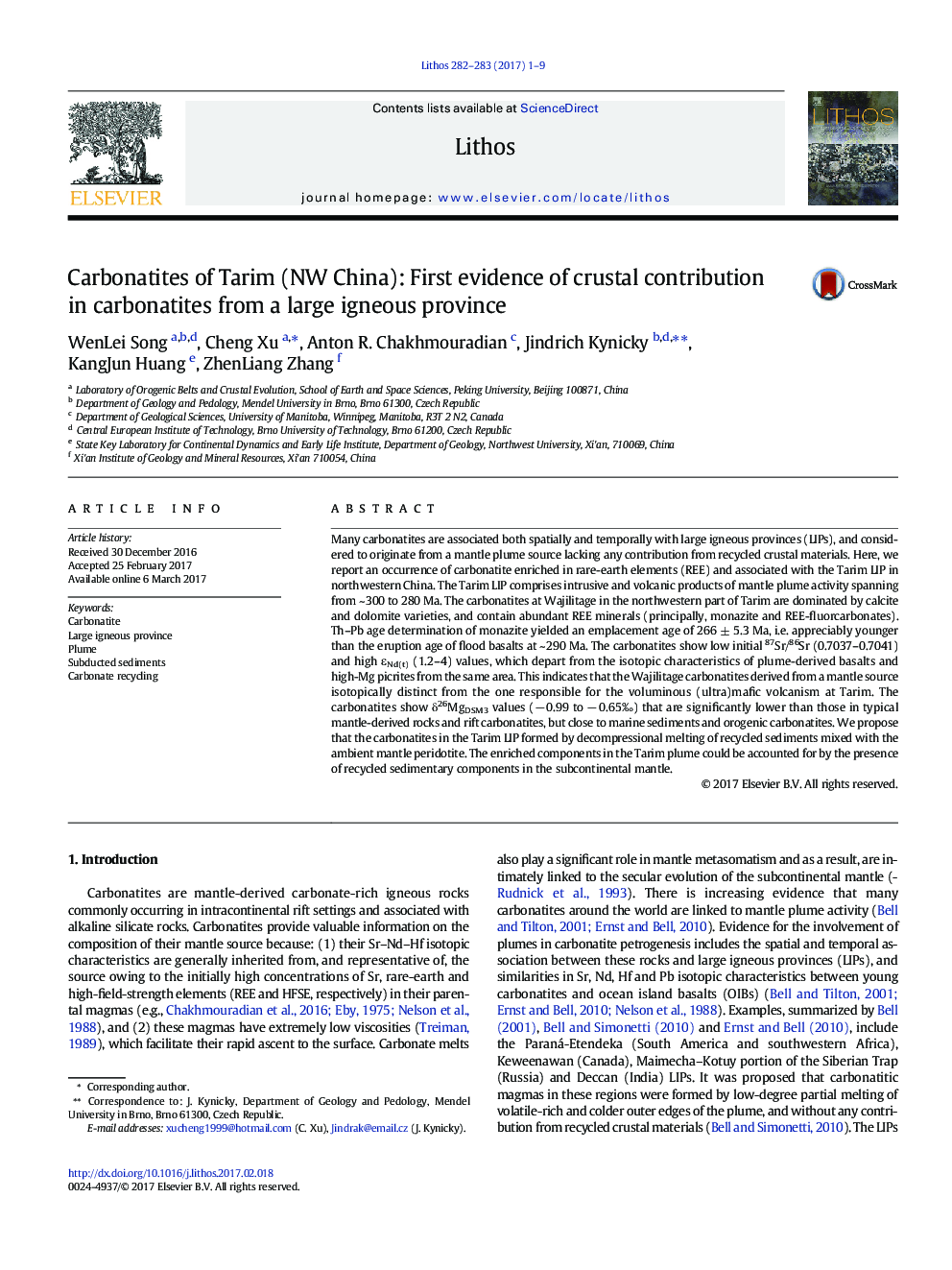| Article ID | Journal | Published Year | Pages | File Type |
|---|---|---|---|---|
| 5784115 | Lithos | 2017 | 9 Pages |
â¢Different mantle sources between carbonatite and associated large igneous provinces.â¢Carbonatite formed by melting of recycled sediments mixing with mantle source.â¢Enriched components in plume associated with subducted sediments.â¢Old subduction supplies recycled C to produce anorogenic carbonatites in rift settings.
Many carbonatites are associated both spatially and temporally with large igneous provinces (LIPs), and considered to originate from a mantle plume source lacking any contribution from recycled crustal materials. Here, we report an occurrence of carbonatite enriched in rare-earth elements (REE) and associated with the Tarim LIP in northwestern China. The Tarim LIP comprises intrusive and volcanic products of mantle plume activity spanning from ~ 300 to 280 Ma. The carbonatites at Wajilitage in the northwestern part of Tarim are dominated by calcite and dolomite varieties, and contain abundant REE minerals (principally, monazite and REE-fluorcarbonates). Th-Pb age determination of monazite yielded an emplacement age of 266 ± 5.3 Ma, i.e. appreciably younger than the eruption age of flood basalts at ~ 290 Ma. The carbonatites show low initial 87Sr/86Sr (0.7037-0.7041) and high εNd(t) (1.2-4) values, which depart from the isotopic characteristics of plume-derived basalts and high-Mg picrites from the same area. This indicates that the Wajilitage carbonatites derived from a mantle source isotopically distinct from the one responsible for the voluminous (ultra)mafic volcanism at Tarim. The carbonatites show δ26MgDSM3 values (â 0.99 to â 0.65â°) that are significantly lower than those in typical mantle-derived rocks and rift carbonatites, but close to marine sediments and orogenic carbonatites. We propose that the carbonatites in the Tarim LIP formed by decompressional melting of recycled sediments mixed with the ambient mantle peridotite. The enriched components in the Tarim plume could be accounted for by the presence of recycled sedimentary components in the subcontinental mantle.
